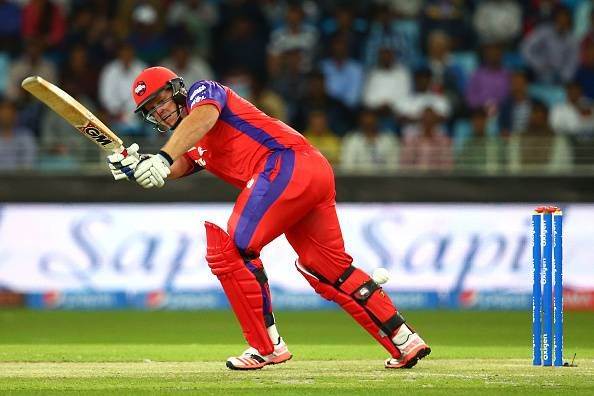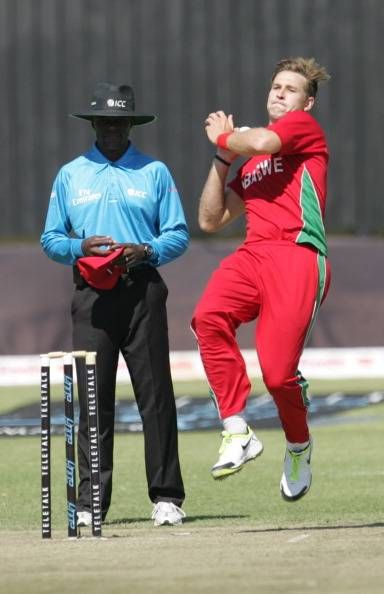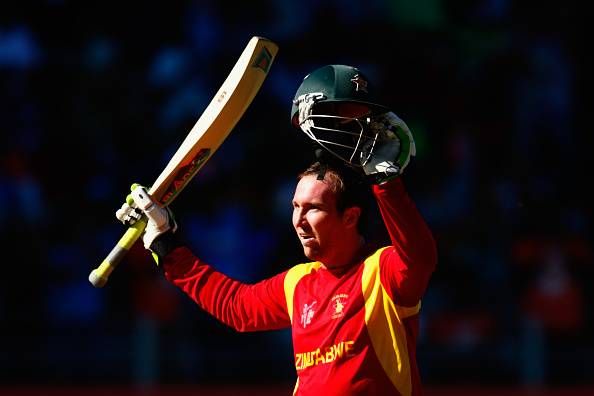
Masters Champions League: Is it prompting early retirement of international players?
Away from the craze that India’s win over Australia in the ongoing Twenty20 International series in Melbourne caused on January 28, the inauguration of the Oxigen Masters Champions League T20 went off as smoothly as ever.
The brainchild of a UAE businessman and entrepreneur Zafar Shah, the latest Twenty20 tournament brings together many legends of the game to participate in what promises to be an action-packed extravaganza. However, the selection of players has raised quite a few eyebrows.
While the majority of the participants involved have already retired from the international arena over the years, the presence of another category of sportsmen once again re-ignites another form of the club vs. country debate, which has prompted multiple superannuations from considerably younger stars.
This category is made of cricketers from Associate Nations affiliated to the ICC, international discards, and those plying their trade in domestic cricket. Hardly the sort of people you’d expect to call retired players, isn’t it? I can think of three reasons why this category chose to do what they did:
One Dimensional Player: Richard Levi continues to be out of the national side

He burst on to the international scene with a phenomenal innings against New Zealand four years ago, but South African dynamo Richard Levi hasn’t been able to establish a regular spot in a side packed with the likes of AB de Villiers and Faf du Plessis. This does not suggest that he isn’t skilled enough to be in the thick of things, but his repertoire of scoring shots is quite limited.
The Johannesburg native, like most of his compatriots, is at home against pace, as his half century against the Libra Legends showed the other night. But that is not all an international opener should have. He favours the leg side more, and has a very noticeable weakness against spin. In addition, he has rarely been consistent with the willow after that cracking century in 2012.
Levi’s approach suggests he is more of a one-dimensional player. It is perhaps the singular reason why he has been left out of the Proteas’ setup of late.
Although he hasn’t officially announced his retirement from international cricket yet, the 28-year old’s involvement with the MCL does undermine the league’s basic premise: using the services of only retired players.
The only loophole I can see is his participation in English domestic competitions (in the limited-overs format) allowed him to turn out for the Gemini Arabians in the Oxigen showpiece. It still doesn’t entirely explain why chairman Shah chose to overlook that particular requirement in favour of entertainment.
Greener Pastures: Kyle Jarvis chose English county cricket over Zimbabwe colours
Kyle Jarvis is not yet 30. Yet, he chose to bid adieu to his blossoming career as one of Zimbabwe’s premier strike bowlers. His reason was simple: a salary dispute with the country’s cricket board in 2013 had him worried about his future prospects. Although he went on to establish himself at Lancashire in subsequent years, Jarvis’ presence in the MCL also adds fuel to the organisers’ overlooking of the rules.
I still don’t see why this is a concern. However, when you’re playing with, or against, people who’re on the wrong side of 40, it does tend to be a bit of a lopsided affair. You’re still in prime shape, regularly turn out for your county and don’t have multiple commitments outside of cricket. That is the school of thought which is opposing the involvement of guys like the 26-year old Harare speedster.
Perhaps the Emirates Cricket Board and the MCL team can clarify their stance on including such players if the tournament is supposed to be about fair play. Expanding the ambit of player qualification might be a workable solution. This, though, will allow Jarvis and many others of his ilk to play without fear of repercussions. There’s no evidence to suggest that the advent of the MCL has actually played a role in the Zimbabwean’s international farewell. Innocent until proven guilty.
Financial Reasons: Brendan Taylor makes his case
Brendan Taylor’s retirement from international cricket in 2015, though unexpected due to its timing, was not a surprise. He wasn’t lured by the cash-rich Twenty20 leagues sprouting up across the globe, though – despite spelling out financial security as his chief reason for the exit.
The Zimbabwean wicket-keeper batsman and former captain preferred to play in the cool climes of England under the Kolpak ruling. Because he’s no longer an international, he fully satisfies the criterion for participating in the MCL. His logic is purely simple – a young family, a steady income and a better standard of living, where his passion for the game can only grow further.
He signed up for the ongoing tournament chiefly to keep himself occupied, as I view it. If looking to make some extra money in the off season is against the basic tenets of humanity, then shouldn’t mega showpiece events like the IPL or the Big Bash League be abolished? Taylor’s participation in the Middle East’s first ever Twenty20 competition should be viewed without prejudice.
Summary
While the question remains unanswered as to whether the Masters Champions League is prompting younger players to turn their backs on international cricket quite early, it is not yet the correct time to point fingers at a tournament which is barely in infancy. You can’t blame international discards or even Associate Nation players for choosing to earn their living this way.
The same questions were asked when the IPL was launched, but to be fair, such journeys actually encourage cricketers to rub shoulders with giants in their field. What’s wrong with that?


